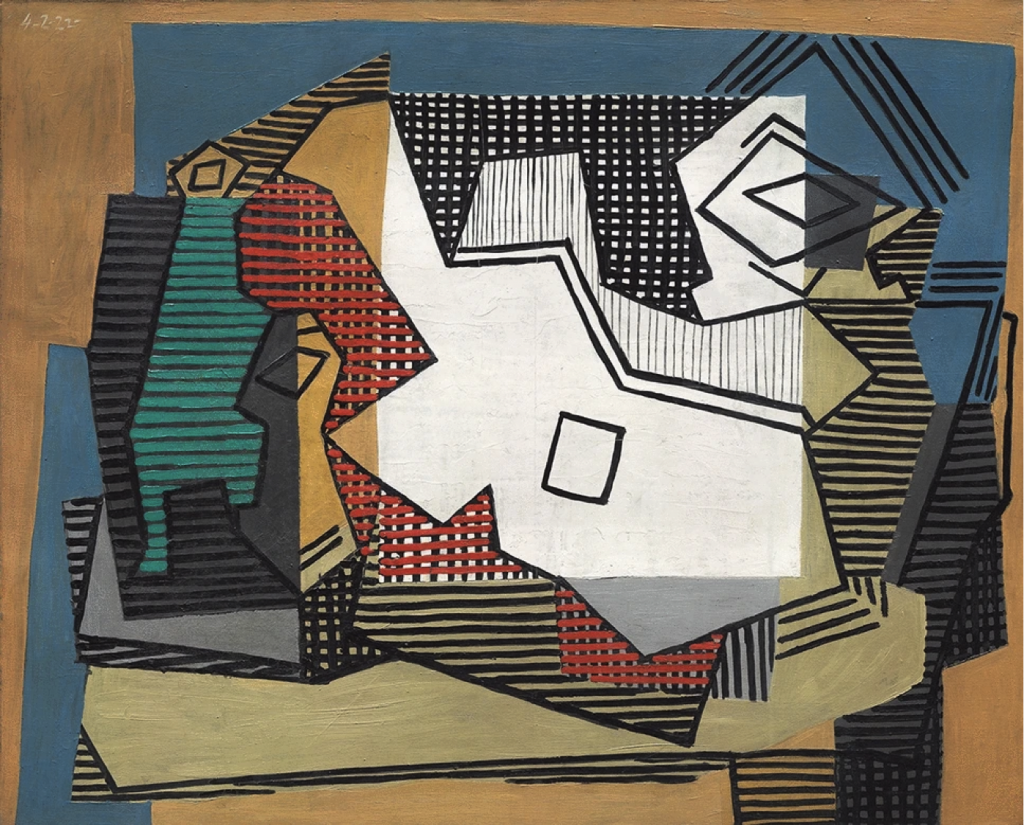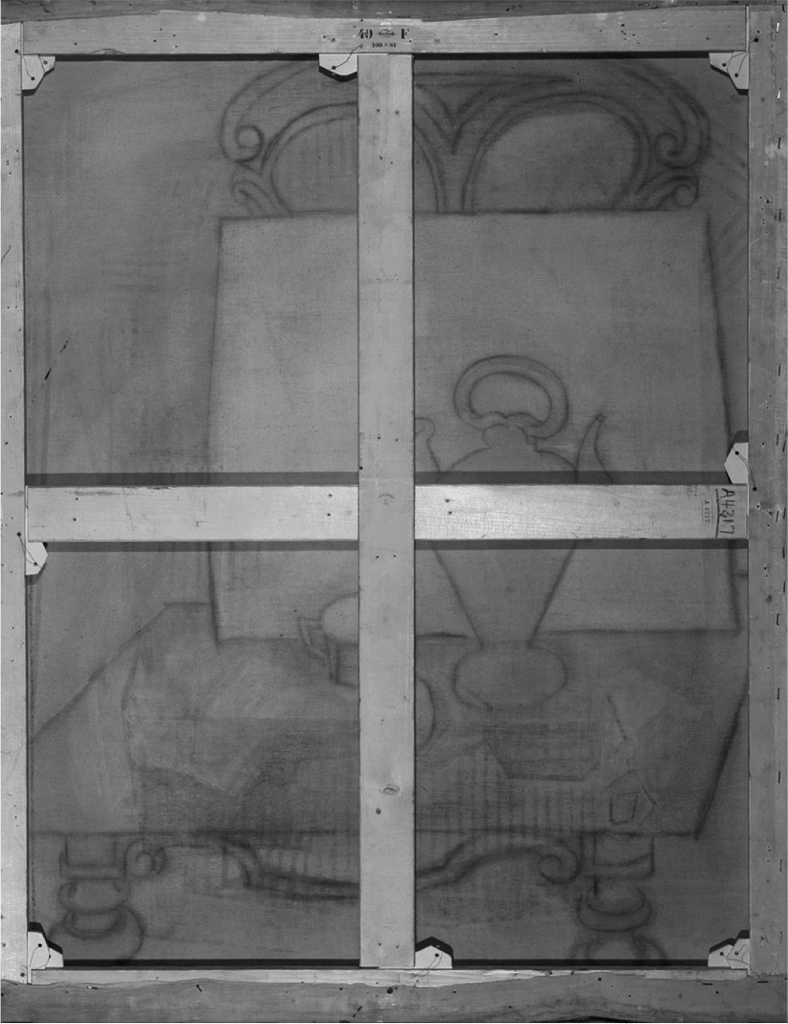Art World
Stunned Conservators Just Found a Ghostly Picasso Hidden Beneath One of the Art Institute of Chicago’s Most Treasured Paintings
The discovery lends new insight into Picasso's practice.

The discovery lends new insight into Picasso's practice.

Caroline Goldstein

What’s better than one Picasso? How about a second Picasso lost for decades?
That’s exactly what a team of research scientists at the Art Institute of Chicago discovered and wrote about in a report published this week in SN Applied Science.
Pablo Picasso’s 1922 canvas, Still Life, has been one of the jewels in the museum’s collection since it was donated in 1953 by Alice Toklas on behalf of her late partner, the writer Gertrude Stein.
The work dates to Picasso’s late Cubist period, when the artist experimented with flat grids underlying color fields and thick lines.
Over the course of two weeks, Picasso painted three very similar works, all depicting a guitar flanked by a bottle and a bowl.
Researchers at the Art Institute chose to study the painting because of the degree of complexity within its painted surface, which appeared to be wrinkled with multiple layers.

Infrared image of the reverse of Picasso’s Still Life showing traces of the first composition: a neo-classical still life. Courtesy of the Art Institute of Chicago.
“Scientific analysis of Picasso’s Still Life was crucial to our understanding of Picasso’s creative process and how he manipulated his paints to achieve different visual effects,” conservator Kim Muir, who worked on the project, tells Artnet News.
The researchers applied X-radiography and infrared imaging to get a closer look, and were stunned to find an entirely different composition beneath the painting. And this one was oriented vertically, instead of horizontally, as in the finished work.
The ghostly image depicts an altogether different still life, with a vase and drinking glass. The image is reminiscent of a Picasso drawing at Sweden’s Gothenburg Museum of Art titled Nature morte (1922).
While it’s no secret that Picasso and other artists reused canvases and carried out various drafts, often covering up early versions, researchers found that in this instance, the artist had painted a large white square covering a large portion of the sketch, as if to block it out.
Muir says that upon close analysis, the researchers were also able to deduce how the painting had been preserved over time, which “informed a conservation treatment strategy” allowing the scientists to “recover the intended surface qualities previously obscured by layers of grime, varnish, and discolored overpaint.”